3. Budgetary revenue and expenditures in 2013
(1) Public finance budgets
There being considerable downward pressure on our economy in the first half of 2013, the growth in government revenue slowed, falling short of the figure forecasted at the beginning of the year. As the economic situation improved in the second half of the year, the increase of revenue and in particular tax revenue picked up. That, coupled with some one-time factors contributing to revenue increases, raised revenue for the year slightly above the figure budgeted in early 2013. National revenue totaled 12.91429 trillion yuan, an increase of 10.1% over 2012 (as below). Adding the 100 billion yuan from the Central Budget Stabilization Fund and 14.974 billion yuan from local government finances, utilized revenue totaled 13.029264 trillion yuan. National expenditure amounted to 13.974426 trillion yuan, up 10.9%. Including the 116.438 billion yuan used to replenish the Central Budget Stabilization Fund and the 138.4 billion yuan used to repay the principal on local government bonds, expenditure totaled 14.229264 trillion yuan. Total national expenditure therefore exceeded total national revenue by 1.2 trillion yuan.
Central government revenue amounted to 6.017377 trillion yuan, 100.2% of the budgeted figure and an increase of 7.1%. Adding the 100 billion yuan contributed by the Central Budget Stabilization Fund, total revenue used by the central government came to 6.117377 trillion yuan. Central government expenditure amounted to 6.850939 trillion yuan, 98.5% of the budgeted figure and an increase of 6.8%. (This includes 2.047175 trillion yuan in central government spending, a rise of 9.1% year on year and 101.3% of the budgeted figure. This was mainly because we reduced the subsidies for miscellaneous local projects during execution of the budget and part of the central government transfer payments to local governments for capital construction investment and sales tax revenue on motor vehicles were reallocated for increased investment in railways, with a corresponding increase of expenditure at the central level.) Adding the 116.438 billion yuan used to replenish the Central Budget Stabilization Fund, central government expenditure totaled 6.967377 trillion yuan. Total expenditure of the central government exceeded total revenue, leaving a deficit of 850 billion yuan, the same as the budgeted figure. The outstanding balance on government bonds in the central budget was 8.675046 trillion yuan at the end of 2013, which was kept within the budgeted limit of 9.120835 trillion yuan for the year. The Central Budget Stabilization Fund had a balance of 148.308 billion yuan.
Figure 1
Balance of Central Government Finances in 2013
The revenue of local governments came to 6.896913 trillion yuan, an increase of 12.9%. Adding the 4.803764 trillion yuan in tax rebates and transfer payments from the central government to local governments, plus the 14.974 billion yuan transferred to the central government from local governments, local government revenue totaled 11.715651 trillion yuan. Local government expenditure amounted to 11.927251 trillion yuan, up 11.3%. Adding the 138.4 billion yuan used to repay the principal on local government bonds, local government expenditure totaled 12.065651 trillion yuan. Total expenditure of local governments exceeded total revenue by 350 billion yuan.
Figure 2
Balance of Local Government Finances in 2013
The following is specific details of the central budget in 2013:
1) Main revenue items
Domestic VAT revenue was 2.052792 trillion yuan, 98% of the budgeted figure. Domestic excise tax revenue was 823.027 billion yuan, 96.3% of the budgeted figure. Revenue from VAT and excise tax on imports amounted to 1.400334 trillion yuan, 88.2% of the budgeted figure, a decline of 5.4%; and revenue from customs duties came to 263.029 billion yuan, 88.6% of the budgeted figure, a decline of 5.5%. Revenue from import taxes fell short of budget largely because growth in imports was lower than forecasted and imports of high-duty goods decreased, and because the prices of bulk commodities dropped. Corporate income tax revenue was 1.44431 trillion yuan, 110.1% of the budgeted figure. This was mainly due to the bigger than expected increases in corporate profits as well as collection of taxes overdue from previous years and other one-time factors. Individual income tax revenue was 391.884 billion yuan, 102.7% of the budgeted figure. VAT and excise tax rebates on exports came to 1.051489 trillion yuan, 94.6% of the budgeted figure, and non-tax revenue totaled 354.005 billion yuan, 128.5% of the budgeted figure.
Central government revenue exceeded the budgeted figure by 11.377 billion yuan in 2013. This was mainly because of the surplus sales tax revenue on motor vehicles, which was used to increase spending on highway construction as required by the regulations on using designated funds for their intended purposes.
2) Main expenditure items
The growth in the central government revenue slowed significantly in the first few months of 2013. With the approval of the Party Central Committee and the State Council, we reduced some central government expenditure during the execution of the budget; at the same time, we reduced special transfer payments to local governments in the course of standardizing the transfer payments system. Accordingly, actual figures for some spending were lower than their budgeted figures.
Expenditure on agriculture, forestry, and water conservancy came to 600.54 billion yuan, 96.9% of the budgeted figure and an increase of 0.2%. This small increase was mainly due to the large base figure for 2012. A one-time additional investment was made while adjusting the spending structure during the execution of the 2012 budget in efforts to build major water conservancy projects and irrigation and water conservancy facilities, reinforce small reservoirs, and clean up and improve the flood defenses of small and medium-sized rivers. We implemented agricultural subsidy policies, moved ahead with trials to subsidize major grain growers, and granted subsidies for scrapping and replacing agricultural machinery on a trial basis. We supported upgrading of 1.86 million hectares of low and medium-yield crop land to high-yield standards. We continued to improve small irrigation and water conservancy facilities in key counties. We supported the large-scale development of highly-efficient water saving irrigation in the north, and launched a campaign to save water and increase grain output in Liaoning, Jilin and Heilongjiang provinces and Inner Mongolia. We implemented the mechanism for subsidizing and rewarding grassland ecological conservation in 639 counties, covering over 80% of grasslands in China. We carried out trials of giving financial support for development of and innovations by specialized farmer cooperatives and pilot projects for developing a new system whereby various sectors of society provide services for agricultural production. We promoted the application of scientific and technological advances in agriculture, and extended to all farming counties (county-level cities, districts and farms) the project of demonstrating the reform of the system for spreading agricultural technology at county level. We further increased special funds for poverty relief efforts and spent the additional funds mainly in contiguous areas with acute difficulties. We comprehensively implemented the government award and subsidy system for village-level public works projects, the launching of which was determined by villagers through deliberation. The demonstrations and trials on comprehensive rural reform and the pilot reform to relieve state-owned farms of public responsibility progressed smoothly.
Spending on social security and employment was 657.175 billion yuan, 100.3% of the budgeted figure and an increase of 14.2%. Basic pensions for enterprise retirees were raised by 10%, with average monthly benefits reaching around 1,900 yuan per person. We increased subsistence allowances for urban and rural recipients living in areas that receive central government subsidies by an average of 15 yuan and 12 yuan, respectively, per person per month. We raised subsidies and living allowances for entitled groups, helped victims of natural disasters rebuild their lives, provided assistance to the homeless and beggars, and ensured basic living conditions for orphans. We implemented a scheme to help college graduates find employment, provided subsidies to job-seeking university graduates from rural and urban families living on subsistence allowances, and increased subsidies to help pay interest on small guaranteed loans.
Spending on medical and health care amounted to 258.812 billion yuan, 99.4% of the budgeted figure and a 26.4% increase. We raised government subsidies for the new rural cooperative medical care system and basic medical insurance for nonworking urban residents to 280 yuan per person per year. Most provincial-level administrative areas unveiled plans to introduce serious illness insurance for their rural and nonworking urban residents. We increased the standard of funding for basic public health services to 30 yuan per person per year, and continued to support major public health service projects. We made steady progress in the pilot reform of county-level public hospitals and the comprehensive reform of community medical and health care centers, and launched a pilot program for posting general practitioners in such institutions. We moved ahead with developing a system for providing assistance in dealing with medical emergencies.
Spending on education was 388.319 billion yuan, 94% of the budgeted figure and an increase of 2.7%. Spending came out short of the budget mainly because student financial aid and subsidies executed according to the actual numbers of students were less than the budgeted figure; also, local government debts arising from providing senior high school education were either managed as local government debt or repaid by local governments, and thus there was a corresponding decline in central government subsidies to help them with these debts. We introduced incentives to encourage nongovernmental sectors to provide preschool education, and gave huge support for the development of rural kindergartens in the central and western regions. We raised the level of funding for compulsory education: the country's 120 million rural students receiving compulsory education were all exempted from paying tuition and other associated fees and were supplied with free textbooks; 12.6 million boarding students from poor families in the central and western regions received living allowances; and living and teaching facilities in some weak schools were further improved. The plan for improving the nutrition of rural students in compulsory education schools brought benefit to 32 million students in poverty-stricken regions. We helped 13.94 million children of rural migrant workers to receive compulsory education in their adopted cities. We supported development of 750 vocational training centers, 706 demonstration secondary vocational schools for education reform and development, and 60 state-level demonstration vocational colleges. We supported the implementation of Project 985 and the 2011 Plan and pushed forward the comprehensive reform of postgraduate education. We further improved government financial aid policies for all stages of education, benefiting roughly 84 million preschool children and students.
Spending on science and technology came to 246.059 billion yuan, 97.3% of the budgeted figure and an increase of 7.4%. We supported efforts to make core technology breakthroughs, bring together the best resources, and build technological platforms for major state science and technology programs. We gave impetus to the development of major strategic products and the construction of important demonstration projects. More investment went into state science and technology programs and the National Natural Science Foundation of China, with the focus of our support on basic research, research for public benefit, and research on cutting-edge technology and key generic technology. We increased funding for basic operating expenses of research institutes, extended the scope of our support for research projects in public service industries, and moved science and technology innovation projects forward.
Expenditures on culture, sports and the media were 53.155 billion yuan, 98.3% of the budgeted figure and an increase of 7.5%.We supported implementation of key cultural programs beneficial to the people, and achieved steady progress in opening museums and other public cultural facilities for free admission. We provided 10,000 yuan to every administrative village in support of their cultural activities. We rendered our support to key projects including the project to secure the Imperial Palace. Greater efforts were put into developing Chinese cultural centers overseas and building international broadcasting capabilities of key media.
Spending on guaranteeing housing totaled 232.094 billion yuan, 104.1% of the budgeted figure and a reduction of 10.8%. This was mainly because there were fewer construction tasks of government-subsidized housing than the previous year. Last year, 5.44 million units of urban government-subsidized housing were completed and construction on another 6.66 million units began. Trials were carried out for assessing the overall performance of the budgets for government-subsidized housing projects in some areas. We supported the renovation of rundown houses for 2.66 million rural households, and raised the amount of central government subsidies to the poor regions.
Spending on energy conservation and environmental protection came to 180.39 billion yuan, 85.8% of the budgeted figure and a reduction of 9.7%. This is primarily because some subsidy policies for promoting the use of energy-efficient products were no longer being implemented once they ended. We supported the prevention and control of air pollution in key regions. Incentive funds have been put in place to support the closedown of outdated production facilities. Support was provided to the construction of key energy saving projects, and we extended to more areas the comprehensive demonstrations for energy conservation and emissions reduction based on integrating financial policies. Work on improving the energy efficiency of 200 million square meters of residential buildings with central heating has been completed in northern China. We supported the trials on the comprehensive prevention and control of heavy metal contamination as well as the efforts to safely dispose, recycle and reuse urban waste. The Golden Sun Demonstration Project to support solar power was launched in areas without electricity, and support has been given to the large-scale development and use of shale gas resources. We continued to move forward with the projects such as those to protect virgin forests and turn cultivated land back to forests. We encouraged the use of energy efficient products and helped to promote energy-efficient, environmentally friendly motor vehicles with engine displacement of 1.6 liters or less, as well as vehicles powered by new energy sources.
Expenditure on transportation totaled 413.85 billion yuan, 104.1% of the budgeted figure and an increase of 4.2%. Expenditure on stockpiling grain, edible oils, and other materials needed for production and daily life came to 126.638 billion yuan, 102.4% of the budgeted figure and up 27.9%. National defense spending was 720.197 billion yuan, 100% of the budgeted figure and a 10.7% increase. Spending on public security amounted to 193.434 billion yuan, 95.3% of the budgeted figure and up 2.9%. Expenditure on general public services was 138.154 billion yuan, 102.3% of the budgeted figure and an increase of 3.9%.
3) Central government tax rebates and transfer payments to local governments
Central government tax rebates and transfer payments to local governments totaled 4.803764 trillion yuan, 98.3% of the budgeted figure and an increase of 5.9%. This sum includes 2.437091 trillion yuan in general transfer payments and 1.860983 trillion yuan in special transfer payments. General transfer payments made up 56.7% of total transfer payments, 3.4 percentage points higher than 2012.
(2) Budgets for government-managed funds
In 2013, revenue from government-managed funds nationwide came to 5.223861 trillion yuan, and their expenditure amounted to 5.011646 trillion yuan.
Revenue from central government-managed funds totaled 423.17 billion yuan, 116.9% of the budgeted figure and an increase of 27.5%. The surplus was mainly because part of the after-tax profits of the China National Tobacco Corporation was collected by the central government to support railway construction. Adding the 83.473 billion yuan carried forward from 2012, revenue from central government-managed funds totaled 506.643 billion yuan in 2013. Expenditure of central government-managed funds totaled 425.947 billion yuan, 96.8% of the budgeted figure and an increase of 27%. Of this, central government spending was 276.086 billion yuan and transfer payments to local governments amounted to 149.861 billion yuan. A total of 80.696 billion yuan has been carried forward to 2014 from central government-managed funds.
Revenue from funds managed by local governments reached 4.800691 trillion yuan, an increase of 40.3%. This figure includes 4.124952 trillion yuan from the sale of state-owned land-use rights. Adding the 149.861 billion yuan in transfer payments from central government-managed funds, total revenue from local government-managed funds was 4.950552 trillion yuan. Expenditure of local government-managed funds totaled 4.73556 trillion yuan, an increase of 38.6%. This includes 4.060045 trillion yuan of spending from the proceeds of selling state-owned land-use rights. Surplus revenue from local government-managed funds has been carried forward to 2014.
(3) Budgets for state capital operations
In 2013, revenue from state capital operations nationwide totaled 165.136 billion yuan, and expenditure on state capital operations, 151.36 billion yuan.
Revenue from state capital operations of the central government totaled 105.827 billion yuan, 104.7% of the budgeted figure and an increase of 9%. Adding the 7.195 billion yuan carried forward from 2012, total revenue stood at 113.022 billion yuan. Expenditure on the central government's state capital operations came to 97.819 billion yuan, 90.3% of the budgeted figure and an increase of 5.2%. This figure includes 6.5 billion yuan, a 30% increase, that was spent on social security and other areas related to the people's livelihood, as planned in last year's public finance budgets. Surplus revenue from the central government's state capital operations totaling 15.203 billion yuan was carried over to 2014.
Revenue from state capital operations of local governments totaled 59.309 billion yuan, and total expenditure amounted to 53.541 billion yuan. Surplus revenue from state capital operations of local governments was carried forward to 2014.
(4) Budgets for social insurance funds
Revenue from social insurance funds nationwide totaled 3.451556 trillion yuan, 105.1% of the budgeted figure. This includes 2.593881 trillion yuan of insurance premiums and 737.15 billion yuan of government subsidies. Expenditure of social insurance funds totaled 2.861675 trillion yuan nationwide, 102.5% of the budgeted figure. Revenue exceeded expenditure in 2013, leaving a surplus of 589.881 billion yuan, and the year-end balance reached 4.344185 trillion yuan after the surplus in 2013 was rolled over.
On the whole, the 2013 budgets were implemented well and good progress was made in all our fiscal work. We owe this to the scientific decisions and correct leadership of the CPC Central Committee and the State Council; the tightened oversight of and effective guidance from NPC deputies and members of the CPPCC National Committee; and the hard work and joint efforts of all regions, government departments and people of all the country' s ethnic groups.
At the same time, we are fully aware of the problems and challenges we still face in fiscal reforms and development: there is a considerable tension between the slow rise in government revenue and the stubborn rise in expenditures; the budget management system needs to be more rounded, scientific, standardized, and transparent; our tax system is not entirely in tune with the new circumstances of economic and social development, reform, and transformation; powers and spending responsibilities between the central government and local governments are not clearly defined, rational, or standardized; carryover and surplus funds are too large; there are certain risks and hidden dangers in local government debts; some foundational work is still not solid enough; and financial discipline need to be urgently strengthened. We will give priority to these problems and take effective measures to resolve them.
 |  |

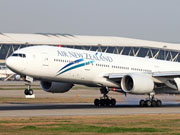 Top 10 safest airlines in the world
Top 10 safest airlines in the world Bridge Worship Festival in Taijiang, SW China
Bridge Worship Festival in Taijiang, SW China 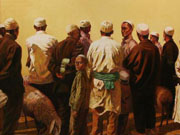 Chinese artists from Flight MH370 and their art
Chinese artists from Flight MH370 and their art Selected photos of 'two sessions'
Selected photos of 'two sessions' Most unusual taxis around the world
Most unusual taxis around the world Sweet photos of mom striking Yoga poses with daughter
Sweet photos of mom striking Yoga poses with daughter Top 10 pure beauties in showbiz
Top 10 pure beauties in showbiz Top 20 happiest cities in China
Top 20 happiest cities in China Beautiful fisherwomen in SE China
Beautiful fisherwomen in SE China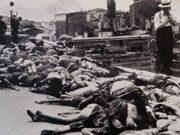 History in photos: Anti-Japanese War (1937-1945)
History in photos: Anti-Japanese War (1937-1945)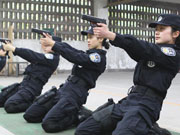 Female SWAT team in Chongqing
Female SWAT team in Chongqing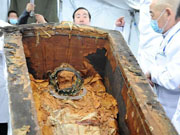 1,500-year-old coffin excavated from grassland in N China
1,500-year-old coffin excavated from grassland in N China Ballerinas anywhere but onstage
Ballerinas anywhere but onstage
Day|Week|Month